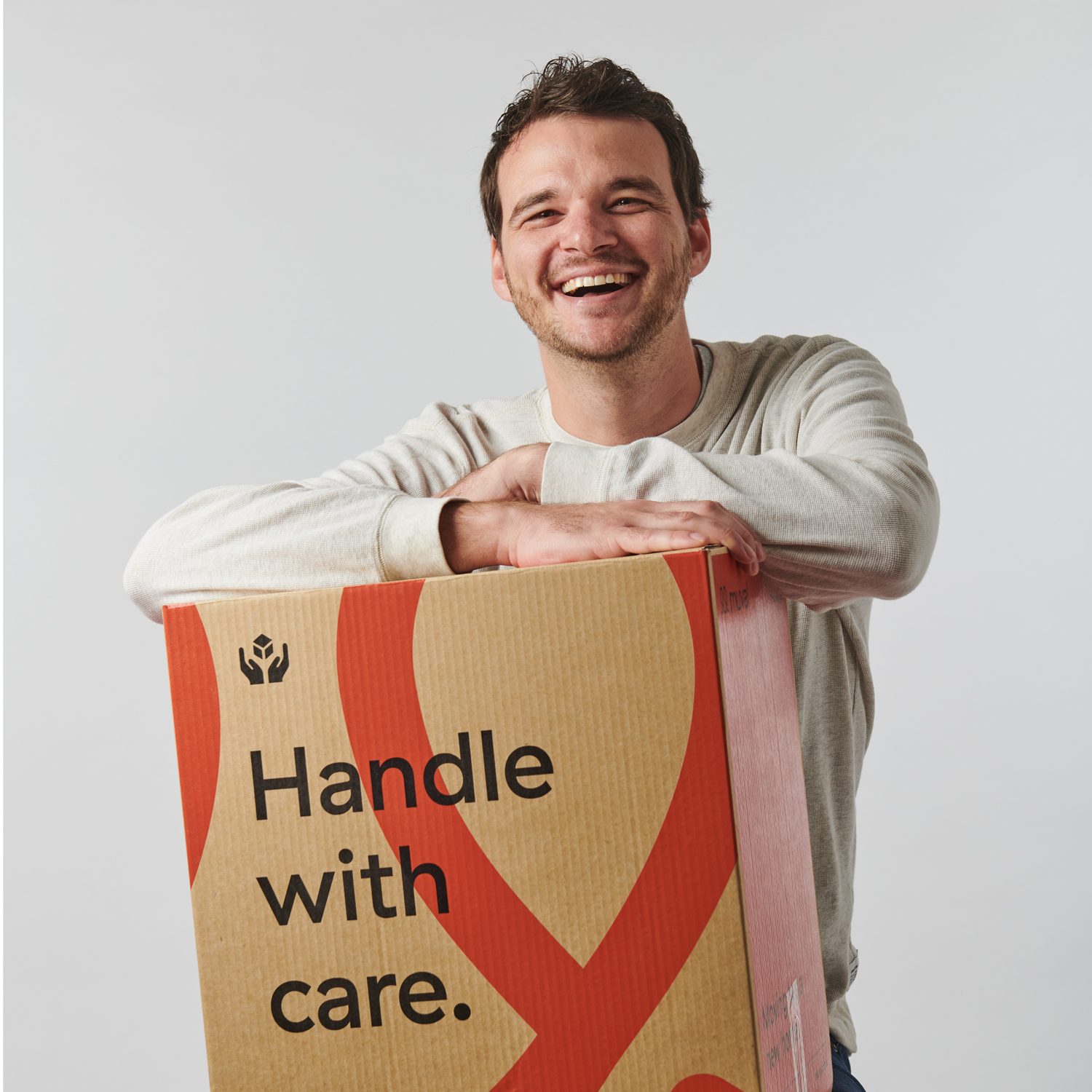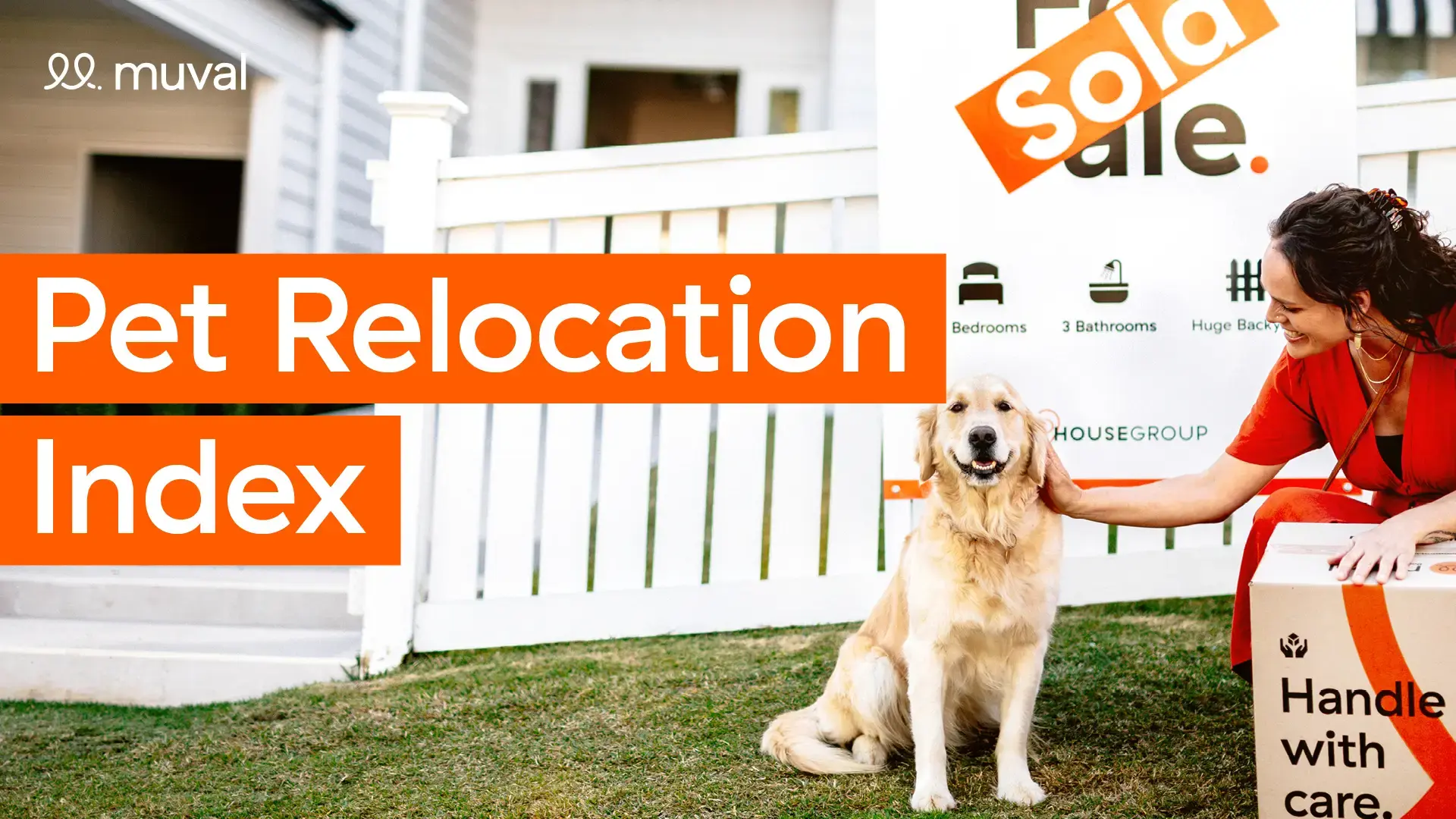Aussies love to live alongside their pets, but not all cities make it easy. Whether it’s access to vets, dog parks, pet-friendly cafes, or affordable insurance and registration, the suitability of a city can make a huge difference for pet owners planning a move.
In this report, we analysed the 50 most populated cities in Australia to determine which locations offer pet-friendliness. Using more than eight key metrics across four categories: Infrastructure, Affordability, Legislation & Policy, and Health & Safety, we created a comprehensive index to reveal the best places in Australia to live with your pet.
Moving with pets can be stressful, especially if you’re relocating interstate. Choosing trusted interstate removalists can make all the difference, helping to take the pressure off and ensuring your furry friends have a smooth and stress‑free move too.
The most pet‑friendly places to live in Australia
Six of the top ten pet‑friendly cities are in New South Wales, with the Nowra–Bomaderry area taking the top spot with an impressive score of 95.79 out of 100 for pet friendliness. Strong affordability and progressive pet policies helped push these NSW regions to the top. The state’s tenant‑friendly laws give NSW a perfect score of 100 for Legislation & Policy — landlords must have reasonable grounds to reject a pet application, pet bonds aren’t allowed, and strata schemes can’t issue blanket bans on pets. Plus, pet owners only pay a one‑off registration fee, keeping costs lower overall.
Coming in second is the Sunshine Coast in Queensland, scoring consistently high across all four categories. The coastal region also stood out for its pet‑friendly lifestyle, with 5% of eateries on Tripadvisor welcoming dogs — almost double the national average across major cities.
Victoria’s only representative in the top ten is Geelong, which ranked fifth thanks to solid scores across the board, particularly in Health & Safety, where it placed seventh overall.
Meanwhile, Brisbane was the only capital city to make the top ten, with regional areas dominating the rankings. The results highlight the strong infrastructure and high number of vets per capita found in smaller towns compared to their metro counterparts.
The least pet‑friendly places to live in Australia
At the other end of the list, four capital cities ranked among the least pet‑friendly places in Australia. While they’re still perfectly viable for pet owners, these cities scored lower on infrastructure per capita — things like access to dog parks, groomers, and pet‑friendly eateries.
Melbourne came in last place, highlighting room for improvement when it comes to affordability and infrastructure. Although the city offers free pet registration for the first year, renewal fees are the highest of all 50 cities — $71 per year for dogs and $44 for cats.
In Western Australia, Perth, Kalgoorlie, and Busselton were all held back by low Legislation & Policy scores. WA is the only state that still allows a “pet bond,” meaning renters can be asked to pay extra to cover potential pet‑related damage or pest control.
For Perth and Busselton, lower infrastructure scores also dragged down their rankings, while Kalgoorlie–Boulder faced challenges in Health & Safety — frequent extreme heat days and limited access to vets and vet nurses per capita make it less than ideal for pets.
The most pet‑friendly places to live by category
The best places for pet‑friendly infrastructure
NSW and Queensland continue to dominate the rankings, with four of the top ten cities located in New South Wales and two in Queensland. Every city in the top ten is regional, showing that pets — and their owners — benefit from more space, green areas, and pet‑friendly services outside metro areas.
Hervey Bay in Queensland and the Bowral–Mittagong region in New South Wales share the top spot for pet infrastructure, both earning an impressive score of 95.0. A strong mix of dog parks, pet groomers, and dog‑friendly eateries helped both regions stand out as some of the best places in Australia to live with a pet.
Hervey Bay performed particularly well for dog‑friendly dining, with 8% of local eateries welcoming dogs, while Bowral–Mittagong led the way for dog parks and groomers, boasting 23.7 of each per 100,000 residents. Together, they highlight how smaller, community‑focused towns are creating some of the most welcoming environments for pets.
The best places for pet affordability
Insurance costs were relatively consistent across most states, so this metric was assessed at a state level. To compare affordability, we analysed the five cheapest pet insurance options on a major comparison platform for a five‑year‑old, desexed Cavoodle and Domestic Shorthair cat. Lifetime costs were calculated based on an expected lifespan of 12 years for dogs and 14 years for cats. Results revealed that the ACT offers the most affordable pet insurance for both cats and dogs, with yearly premiums of $704 for dogs and $662 for cats — translating to approximately $8,400 and $9,300 over their respective lifetimes.
Registration, on the other hand, varied more widely. The ACT and NSW stand out with state‑wide, one‑off lifetime registration fees, while other states require annual renewals, with pricing differing by council.
When combining lifetime registration and insurance costs, the ACT and NSW ranked as the most affordable for dog owners, thanks to their one‑off registration fees. For cat owners, the ACT and Tasmania were the most cost‑effective — the ACT benefited from lower insurance premiums, and Tasmania from the absence of cat registration costs.
The best places for pet legislation and policy
When it comes to legislation and pet policies, New South Wales, Victoria, Queensland, and the Australian Capital Territory scored full marks, with no major issues around landlords, strata rules, or pet bonds. These states make it relatively straightforward for renters to bring pets into their homes.
South Australia, Tasmania, and the Northern Territory scored slightly lower, as certain strata rulings can potentially impact pet ownership. In these states, a body corporate can, in some cases, apply blanket bans on pets, making it trickier for tenants to secure a pet‑friendly property.
At the bottom of the list, Western Australia received the lowest score. It’s currently the only state that allows “pet bonds,” which let landlords charge up to $260 extra on top of a regular rental bond to cover pet‑related cleaning, damages, or pest control.
The best places for pet health and safety
Nowra–Bomaderry in NSW scored the highest for Health & Safety. The area benefits from mild weather, with only around 25 extreme weather days per year — when temperatures rise above 30 °C or drop below 5 °C — reducing risks for pets. On top of that, the region has a strong network of veterinarians and vet nurses per capita, making it a safe and reliable place for pet owners.
Other regional cities, including Coffs Harbour, Albany, and Warrnambool, showed similar strengths. These towns combine temperate conditions with good access to pet health care, highlighting why regional areas often rank higher than major cities when it comes to keeping pets safe and healthy.
 James Morrell
James Morrell CEO at Muval
“Moving house is always a big change, and when you have pets, it’s even more important to plan ahead to keep them safe, happy, and stress‑free. Start by familiarising pets with their travel crate or carrier well before the move so it feels like a safe space. Maintain routines as closely as possible, including feeding, walking, and playtimes, to reduce anxiety. During long journeys, schedule regular breaks for exercise, bathroom stops, and hydration.
“Make sure all microchip details, vet records, and pet insurance are up to date, and consider bringing along a comfort item like a favourite toy or blanket to help them feel secure. If possible, set up a quiet, secure space in the new home where your pet can retreat while boxes are being moved.
“And don’t underestimate the value of hiring professional movers. Having experienced staff handle furniture and boxes can reduce chaos and noise, making the move less stressful for your pets. Once you arrive, explore the new neighbourhood together. Visiting local parks, vet clinics, and pet‑friendly cafes will help your pet adjust quickly and start enjoying their new home.”
About the data
Muval analysed the 50 most populated cities in Australia to crown the best for pet and pet‑owner liveability with relocation in mind. The research covers eight key metrics grouped into four categories that affect the suitability of a city for pets: Infrastructure, Affordability, Legislation & Policy, and Health & Safety.
The factors outlined below were collected from the latest available national, state and local government sources, trusted industry publications and sources, as well as the Bureau of Meteorology (BoM) and open map databases. The data was then aggregated, normalised and weighted to create an index that allows direct comparison across cities.
Category scores were normalised on a scale from 20–100, with higher scores signalling better circumstances for pet ownership.
| Category | Rationale | Measure | Measure Weight | Category Weight |
| Infrastructure | Availability of vets, shelters, pet‑friendly rentals, and transport systems are all enablers. Without infrastructure, even good policy doesn’t translate into lived experience. | Dog Parks | 15% | 30% |
| Dog Friendly Eateries | 10% |
| Pet Groomers | 5% |
| Affordability | Lifetime registration and insurance outlays directly affect pet ownership and relocation feasibility. | Pet Insurance Costs (State) | — | 20% |
| Council Pet Registration | — |
| Legislation & Policy | Rules around tenancy, strata, and pet bonds determine whether a household can actually bring or keep pets when relocating. | Required reason to refuse tenancy with pets | 8% | 20% |
| Pet bonds | 6% |
| Strata pet bans outlawed | 6% |
| Health & Safety | Accounts for both animal health system strength and environmental risks. High‑quality vet access supports everyday care and emergencies, while extreme weather is a direct welfare risk. | Vets per capita | 10% | 30% |
| Vet nurses per capita | 6% |
| Extreme heat days (>30 °C) | 7% |
| Extreme cold days (<5 °C) | 7% |
| Total | 100% |
Notes on the data
- “City” refers to Significant Urban Areas (SUAs) per the Australian Bureau of Statistics (ABS). The top 50 cities were selected by population as at 30 June 2024.
- Infrastructure: Counts derived from OpenStreetMap and Overture Maps, bounded by government shapefiles. Figures are best‑effort estimates after validation (clipping, de‑duplication, keyword filters, cross‑references).
- Dog‑friendly venues were calculated as the number of eateries explicitly tagged as “dog‑friendly” on Tripadvisor as a proportion of total eateries within the region.
- Dog parks were cross‑checked against the downunderdogparks database within a 30 km radius of cities (includes local dog parks, off‑leash areas, and pet‑friendly beaches).
- Legislation & Policy: State‑level scoring combined three tenancy and housing measures using weighted averages and normalisation.
- Affordability: Registration prices reflect desexed, microchipped pets; council pricing sampled September 2025. Insurance pricing averaged the five cheapest products for specified dog and cat profiles at capital‑city postcodes; lifetime cost assumes flat rates.
- Health & Safety: Extreme weather days calculated via area‑weighted overlays of ABS boundaries and BoM gridded weather data (SILO), 2020–2024; vet/vet‑nurse data from the 2021 Census.
Article by: James Morrell

